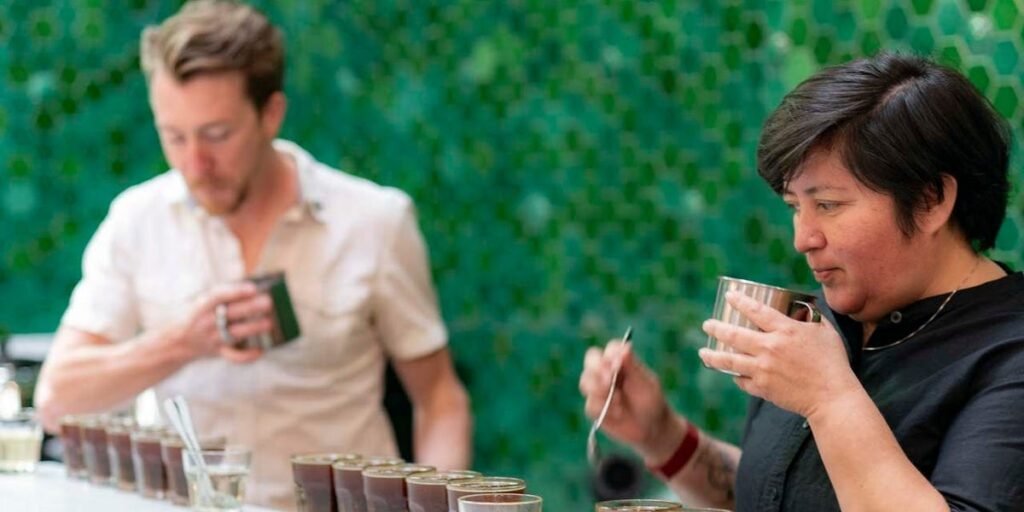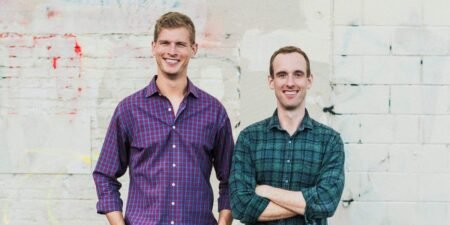This as-told-to essay is based on a conversation with Chris Kornman, who is the director of education for Royal Coffee and works out of the company’s café and coffee lab, called The Crown, in Oakland, California. The following has been edited for length and clarity.
I’m in a very unique position in the coffee industry, where I get to speak to almost everyone in the supply chain.
At Royal Coffee, we import beans and sell them to coffee roasters. Our business model also includes classes and the coffee we sell at The Crown café.
On April 10, we raised our café prices by 50 cents for every drink, except our $2 dark roast, which is an entry point for people who might not be used to specialty coffee and specialty prices.
That’s because, as an importer, we are the first ones hit by the actual cost of tariffs. At the ports we get billed, literally, for the tariffs.
We bring in a lot of coffee from Brazil, Colombia, Ethiopia, and Indonesia, as well as every coffee-producing country in Central America and Tanzania, Kenya, and Uganda. In total, we buy coffee from more than 30 countries.
President Donald Trump paused some of his proposed tariffs, but we’re still being impacted by a 10% increase at the point of import for all those countries except Mexico. That erases our entire profit margin if we absorb it.
I think the coffee industry at large is facing an unprecedented crisis. We have to figure out how to make rising costs and uncertainty about tariffs and climate change sustainable for everyone involved, and part of that equation is asking our customers to pay a little bit more for a cup of coffee.
Everything’s expensive all the time now
The tariffs come on top of historic high coffee-bean prices for the entire calendar year of 2025. That’s been attributed to bad weather in Brazil and Vietnam, the world’s two largest coffee producers.
Energy and labor costs continue to go up, too. Shipping costs have also gone up astronomically over the past couple of years. The cost of wholesale, unroasted coffee is already double or sometimes triple what people are used to paying.
I don’t see a lot of real, meaningful relief on the horizon.
I was just speaking to a small roaster in Cleveland, Ohio, who’s raising his prices. I’ve had a conversation like that with folks almost every day this year so far. So there was a pre-tariff concern about cost, and then the tariffs hit.
More sticker shock for cheap coffees
For people who are used to very cheap coffee — whether that’s the bottom shelf at the grocery store or the gas station at the corner — I think at some point those coffees are going to be diluted by some non-coffee product like vegetable pulp or their prices are going to be raised in ways that will shock the average customer.
I think there’s going to be a little less sticker shock for the fancy café customer who’s used to paying $6 or $7 for a pour-over or a latte. The difference between $5.50 and $6 for a cappuccino at our cafe is very different from a $1.50 styrofoam coffee cup going up to $3.
We can’t just turn up coffee production in the US. Even if we could, the only places that are growing it commercially, volume-wise, are Hawaii and Puerto Rico, and a very, very small amount here in California. They’re in no way able to scale up production to make up for the 99% of coffee that we get from everywhere else in the world.
Coffee has been undervalued for a long time
There’s been a long-standing desperation in people who produce coffee in many places in the world, that they’re not being paid enough.
That breaks my heart, because I don’t want to participate in an industry that’s built on exploitation. I don’t think that’s us in the specialty coffee world, but there is a problematic legacy that predates all of us.
The good news is that for the past 20 or 25 years, a lot of folks like myself are trying to increase awareness about good coffee, and how it does cost more, and how coffee has been undervalued for a long time. So there’s an opportunity, I think, for increased awareness — if we don’t lose customers to alternative caffeine sources.
Read the full article here
















